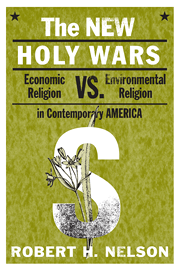Many environmentalists are unhappy about President Barack Obama’s nomination of Ernest Moniz, a professor of physics and engineering at MIT, to be Secretary of Energy.
As Director of the MIT Energy Initiative, Moniz assembled an all-star cast of MIT physical and social scientists to produce a June 2011 report that pointed to natural gas as an abundant, low-cost energy source that could sustain much of the world’s energy needs over the next several decades while we transition to wind, solar, tidal, geothermal and other carbon-free energy sources. It would also offer large environmental benefits because gas emits few conventional pollutants, and only about half as much carbon dioxide as the main transitional alternative: continued coal burning.
Implicit in the MIT vision was an understanding that shale gas development, using the technology known as “fracking,” should and will occur on a global scale. While a few groups such as the Environmental Defense Fund have been supportive, this is unacceptable to many others in the environmental movement. So they are striking out to discredit Professor Moniz, his views, and the additional large body of academic research and practical experience proving the efficacy and safety of fracking.
In the environmentalist blogosphere, for example, the discussions of natural gas and fracking take on a decidedly hostile tone. “Fracking is madness, a sign of a society gone completely insane and bent on self-destruction,” one blogger wrote recently. Said another: “The more we learn about a gas-drilling practice called hydraulic fracturing—or ‘fracking’—the more we see it as a zenith of violence and disconnect” in our world.
Although not nearly as extreme, related sentiments also are being expressed by many “mainstream” environmentalists. At a July 2012 “Stop the Frack Attack” rally, Sierra Club president Allison Chin described the thinking behind her organization’s new “Beyond Gas” campaign, warning against the “out-of-control rush to drill [that] has put oil and gas industry profits ahead of our health, our families, our property, our communities, and our futures. If drillers can’t extract natural gas without destroying landscapes and endangering the health of families, then we should not drill for natural gas.”
The movie Gasland put the skills of Hollywood to work in spreading a similar dire message.
The result of such environmental fear mongering—often covered uncritically in the media—has been to convince a surprisingly large number of people that fracking is dangerous, to people and the environment alike. As a result, New York State and Maryland have thus far refused to allow fracking within their borders; a Maryland legislative committee recently defeated a proposal for a legal ban, but just narrowly.
One agency missing in action has been the Environmental Protection Agency. In 2009 the U.S House of Representatives asked EPA to study the impact of fracking on drinking water. EPA agreed, but took two years to begin the research. Then, in December 2012 EPA issued a progress report that managed not to answer any of the key questions, promising continued research.
EPA seems paralyzed, recognizing the significant environmental benefits of natural gas, but fearful of challenging the fracking orthodoxies of its longtime environmental “movement” supporters.
Despite their strong opposition to fracking, few environmentalists seem to understand very well how the process actually works.
First, what is essentially a conventional oil and gas well is drilled vertically, typically to several thousand feet or more below the surface. When this is completed the more novel part of the fracking extraction process comes into play, applying techniques innovated in Texas in the 1990s. The well shaft previously drilled vertically is redirected to become horizontal, with the drilling continuing until the shaft stretches out horizontally about half a mile to a mile. When the drilling is finished, water, combined with chemicals designed to reduce friction and serve other purposes, is injected from the surface into the well shaft at very high pressures, thereby fracturing the shale rock formations far below, and making it possible to extract economically the natural gas embedded in the shale.
Occurring far underground (often 5,000 feet below the surface, for example, in the Marcellus formation in Pennsylvania), it is implausible that the shale fracturing—the “fracking”—could have any direct impacts on the land surface above or on the water aquifers that are typically located much closer to the surface. Indeed, some geologists think it is physically impossible.
There is, however, one new element to the fracking process that is not encountered in traditional oil and gas drilling. When the high water pressure is released after the fracturing of the shale, some 10 percent to 30 percent of the water comes back to the surface. This “flowback water” contains both natural contaminants picked up underground during the fracturing process and the chemicals used by the driller to facilitate the fracturing. The water must therefore be disposed of safely or—as is increasingly the case—be cleaned up and recycled for use in the next well.
This has proved to be the most environmentally challenging part of the fracking process. And abuses, such as dumping flowback water into rivers and streams, have occurred. As a result of increasing regulation, however, and growing recognition within the gas industry that its future depends on public acceptance, the treatment of flowback water has improved greatly. As the 2011 MIT report concluded, “the environmental impacts of shale development are challenging but manageable.”
The environmental movement is of course entirely correct to insist that natural gas be extracted from shale in an environmentally responsible way, and that local socio-economic disruptions be minimized so far as possible. With substantial progress already having been made and continuing in these areas, and with further delays having large environmental and economic costs of their own, the fracking controversy has become a very expensive distraction for our nation and the world.












